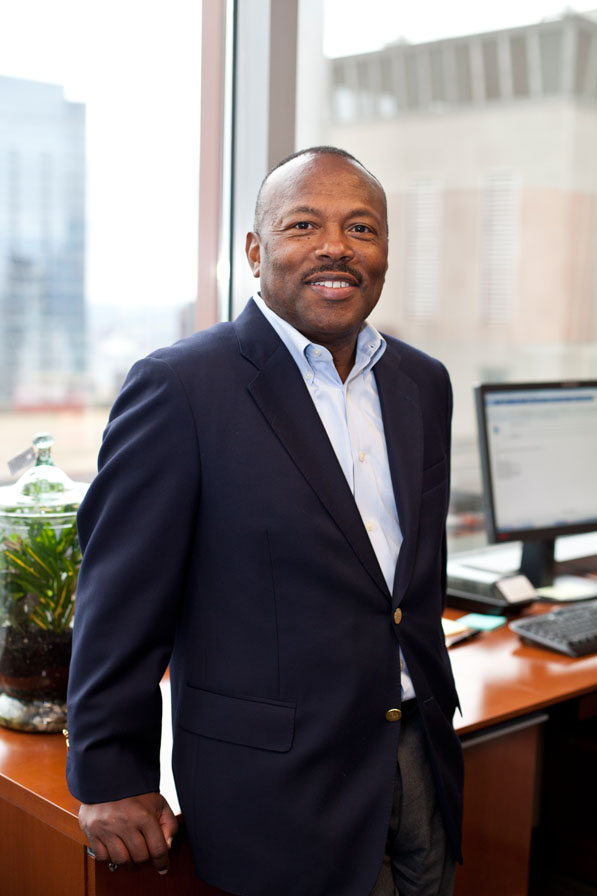The best professionals in the financial field are those that look for the story—and people—behind the numbers. Lorie Leeson, vice president of corporate finance and treasurer at The Greenbrier Companies, Inc. makes collaboration a top priority when tackling issues and developing procedures to boost the company’s profitability. “What I enjoy most is working with others to come up with solutions to problems,” she says. Whether it’s in financing, planning, or budgeting, Leeson assembles the proper team to identify the issue and devote the necessary time and energy to ensure the company comes out ahead. Here, Leeson walks us through what got her excited about finance and what she has in store for Greenbrier.
Finance might be genetic for me. My father is an accountant, and I have always been good with numbers and keeping things organized, so when I entered college my major was accounting. After graduation, the logical next step was to go into public accounting, where you get a broad range of experience looking at different types of clients. It’s a great training ground.
I spent four-and-a-half years in public accounting, auditing the financial books and records of various clients. When I transitioned out of public accounting and went to work for one of my clients, I started having auditors come to me. It was a penny-dropping experience for me, to see the same activities from a different angle. It’s something I’ve taken with me throughout my career. Sometimes we have to try a little bit harder to see things from the other side.
Greenbrier had recently gone public when I came to the company in July of 1994. They realized they needed to add staff to meet the reporting requirements associated with being a public company. I was intrigued by the fact that the company built railroad freight cars, boxcars, covered hopper cars, intermodal cars—the railcars you see transporting commodities and containers.
Working at Greenbrier, I’m dealing with a tangible product. Even being on the finance side, I’ve found that I enjoy working for a company that manufactures products, in addition to all the services Greenbrier provides. It’s something I can wrap my head around as to what it is. The first few years at Greenbrier I spent preparing the public reporting, and being in that reporting position really gives you the opportunity—if you want to take advantage of it—to educate yourself on all facets of the business. You achieve that by talking to people, getting the story behind the numbers.
Because of this, combined with my curiosity, when the company expanded its manufacturing operations into Europe and Mexico in 1998, it gave me the opportunity to begin implementing some reporting procedures in our manufacturing operation, making things consistent and timely, so at the corporate level we could make decisions about where we were going to build railcars, understand the financial result, and understand the margins. I took the opportunity to transition from a purely accounting role into more of an operational area. As those procedures became solidified, my curiosity continued, and I started getting into the overall financial planning and analysis for the entire company.
In 2007, I picked up treasury activities, including corporate debt management. Around this time, we were making several acquisitions within our repair and refurbishment network. The railcar manufacturing industry is very cyclical in North America. We had been subject to this volatility in our financial result before and during this time, and we turned our focus to the aftermarket business, the repair, and refurbishment.
Between 2006 and 2008 we did a total of four acquisitions totaling more than $300 million spent, which meant that we put a fair amount of debt on the books, and it was my team’s job to manage and review that debt. Then, in 2009, there was a significant decline in the number of railcars built across the industry. In 2008, around 60,000 new railcars were built in North America. Then, in 2009, that dropped down to just north of 20,000. You can imagine the impact that had.
Thankfully we had great relationships with our primary banking partners. As we were going into the downturn, we were looking at what the expectations were. We did anticipate that we were going to have an asset impairment associated with the goodwill from those acquisitions. But, with the solid relationships we had established with our lenders, we were able to negotiate an amendment to our credit agreement. In addition, we have a really strong management team at Greenbrier that had been through several similar cycles on the new railcar production side.















